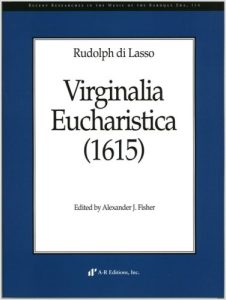Author: Hesselink, Nathan
Publication details: Tongyang ŭmak [Asian Music] 25:111-27 (2003)
Kil kunak ch’ilch’ae (Seven-Stroke Road Military Music) Rhythmic Pattern: P’ungmul and the Bridging of the North-South Divide
The Craft of Hybrid Composition: Meter, Tonality, and Grouping in Michael Torke’s ‘Adjustable Wrench’
Author: Roeder, John
Publication details: Perspectives of New Music 41/2: 120-158.
Weblink: https://www.jstor.org
Beat-Class Modulation in Steve Reich’s Music
Author: Roeder, John
Publication details: Music Theory Spectrum 25/2: 275 – 304
Weblink: http://www.jstor.org
Abstract:
A beat-class model of rhythm, employed by Cohn and others to analyze textural form in Steve Reich’s early phase-shifting compositions, is here enlarged to embrace the concepts of beat-class “tonic” and “mode,” defined formally by analogy to pitch-class tonality. Using these concepts, analyses of Reich’s more recent music—Six Pianos, New York Counterpoint, and The Four Sections—demonstrate how form-creating process of pitch and rhythm result from the specific manner in which repeated patterns are built up, varied, and combined polyphonically
Schoenberg and the Prejudices of His Time
Author: Kurth, Richard
Publication details: Symposium Questioni di Gender e di Policulturalismo nel Novecento di Schoenberg e di Nono. Fondazione Giorgio Cini, Venice
Forbidden Images
Author: Kurth, Richard
Publication details: Keynote address. Pacific Northwest Music Graduate Students’ Conference. Hosted by the UBC School of Music.
Schönberg and the Bilderverbot
June 2002. “Schönberg and the Bilderverbot.” Symposium Arnold Schönberg and His God. Arnold Schönberg Center, Vienna.
Author: Kurth, Richard
Publication details: Symposium Arnold Schönberg and His God. Arnold Schönberg Center, Vienna.
Some Combinatorial Properties and Computational Problems in Twelve-Tone Music
Author: Kurth, Richard
Publication details: UBC Computer Science Department.
“Fugger” [family of bankers and music patrons]
Author: Fisher, Alexander
Publication details: Die Musik in Geschichte und Gegenwart, 2d ed., Personenteil 7:246–52. Kassel: Bärenreiter, 2002.
Weblink: www.abebooks.com
Edition of Rudolph di Lasso, Virginalia Eucharistica
Author: Fisher, Alexander
Publication details: (Munich: Nikolaus Heinrich, 1615). Recent Researches in the Music of the Baroque Era 114. Madison, Wisc.: A-R Editions, 2002.
Weblink: https://www.areditions.com
The Art of Cadence in Schönberg’s Fourth Quartet: Metric Discourse or Dialectic?
Author: Kurth, Richard
Publication details: Journal of the Arnold Schönberg Center 4: 245-270
Download: PDF

